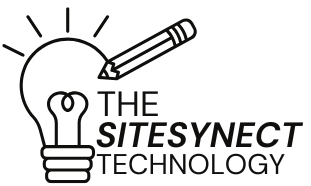AI Ethics: What Businesses Need to Know
Stay compliant and build trust with ethical AI practices! Learn how to tackle bias, ensure transparency, and navigate 2024 regulations like the EU AI Act.

Introduction: Why AI Ethics Can’t Be Ignored
In 2024, AI isn’t just a competitive edge—it’s a responsibility. From biased hiring algorithms to facial recognition lawsuits, ethical missteps can cost millions, damage reputations, and erode trust. With 60% of consumers saying they’ll abandon brands that misuse AI (PwC), ethical practices are now a business imperative. Here’s how to navigate AI ethics in 2024 and build systems that are fair, transparent, and compliant.
Key Ethical Challenges in AI
-
Bias & Discrimination
-
Example: Amazon’s scrapped hiring tool penalized female candidates.
-
Fix: Audit training data for diversity gaps; use tools like IBM’s AI Fairness 360.
-
-
Privacy Risks
-
Example: Clearview AI’s unauthorized facial recognition database.
-
Fix: Anonymize data; comply with GDPR/CCPA.
-
-
Lack of Transparency
-
Issue: “Black box” algorithms making unexplainable decisions.
-
Fix: Adopt Explainable AI (XAI) frameworks like LIME or SHAP.
-
-
Accountability Gaps
-
Risk: Who’s liable if an AI-powered medical device fails?
-
Fix: Define clear governance roles (e.g., Chief AI Ethics Officer).
-
Principles of Ethical AI
-
Fairness: Ensure outcomes don’t favor specific demographics.
-
Transparency: Disclose how AI makes decisions (e.g., EU’s AI Act requirements).
-
Privacy: Collect minimal data; encrypt and anonymize.
-
Sustainability: Reduce carbon footprints of energy-hungry AI models.
2024 Regulatory Landscape
-
EU AI Act: Bans high-risk AI (e.g., social scoring) and mandates transparency.
-
U.S. AI Bill of Rights: Guidelines for safe, non-discriminatory AI.
-
Global Standards: ISO 42001 for AI governance launches late 2024.
5 Steps to Build Ethical AI Practices
-
Conduct Bias Audits
-
Use tools like Google’s What-If Tool to test model fairness.
-
-
Implement XAI Techniques
-
Make AI decisions interpretable for stakeholders.
-
-
Train Teams
-
Educate staff on ethical AI principles (e.g., Microsoft’s Responsible AI Course).
-
-
Engage Diverse Teams
-
Include ethicists, lawyers, and marginalized voices in AI development.
-
-
Monitor Continuously
-
Track AI performance post-deployment with tools like Arthur AI.
-
Case Studies: Lessons Learned
-
Success: Microsoft’s AI for Accessibility program prioritizes inclusivity, funding tools for people with disabilities.
-
Failure: Twitter’s image-cropping AI favored lighter-skinned faces, sparking backlash.
Future Trends in AI Ethics
-
AI Watermarking: Detect AI-generated content to combat deepfakes.
-
Ethical AI Certifications: Like “Fair Trade” labels for algorithms.
-
Carbon-Neutral AI: Tools like Hugging Face’s CodeCarbon track environmental impact.
Conclusion: Ethics as a Competitive Advantage
Ethical AI isn’t just about avoiding fines—it’s about future-proofing your brand. Companies like Salesforce and IBM are already leveraging ethical AI to attract top talent and loyal customers. Start small: audit one high-risk AI system, train your team, and build transparency into your workflows. In 2024, doing good is good for business.
What's Your Reaction?
 Like
0
Like
0
 Dislike
0
Dislike
0
 Love
0
Love
0
 Funny
0
Funny
0
 Angry
0
Angry
0
 Sad
0
Sad
0
 Wow
0
Wow
0







































